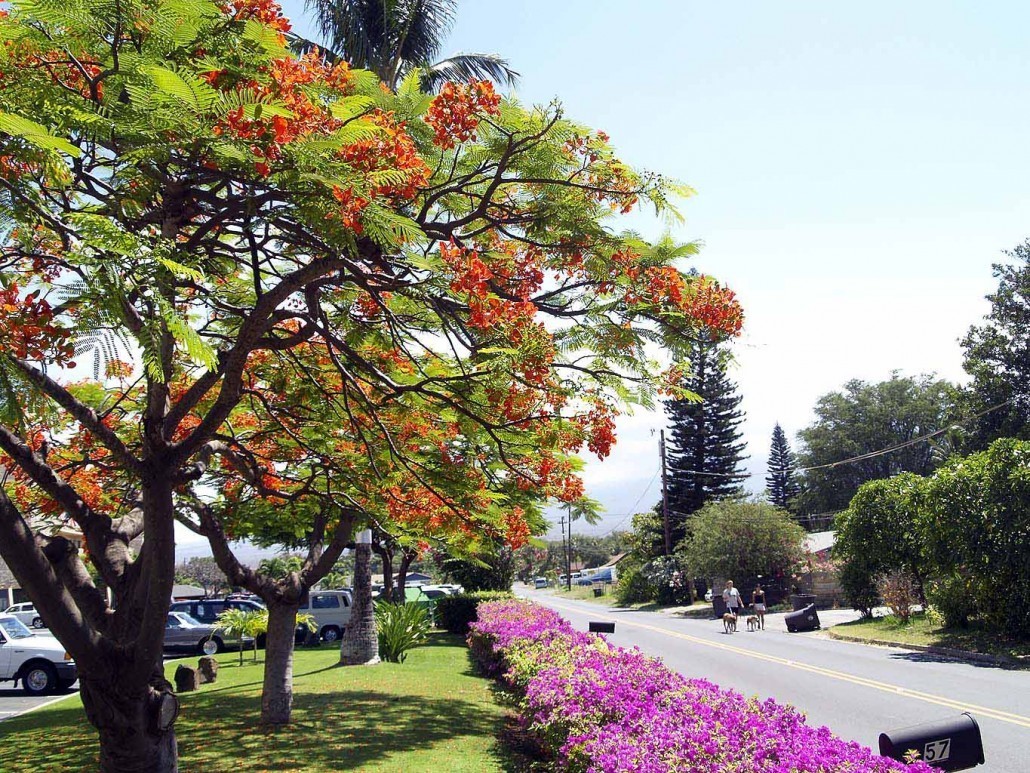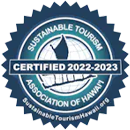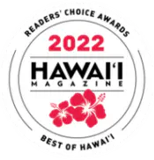
What To Expect in Maui During March, April & May
Spring In Maui
Maui is one of the most diverse of all the Hawaiian islands. You can drive, in less than an hour, from an area that is the second wettest place on earth to an area where the annual rainfall is 16 inches per year. With this kind of variety, Maui is an island that never gets old.
There is always something beautiful to see and do here no matter what time of year you visit, but there are a few times during the year when the weather is gorgeous but not too hot, and the crowds are thin. Those who live on the island know that there is something special about springtime in Maui!
Maui’s Weather
The incredible diversity of Maui’s mountains and ocean have left us with 17 out of approximately 20 known climate zones on earth. Which means just about any kind of weather can happen in Maui depending on where you are. Hawaii sits pretty much at the boundary between tropical and subtropical regions on the planet which is why the weather is ideal year around. Yes, we have seasons, but they are a little different than the rest of the U.S. First of all there are only two seasons – wet and dry. The transition between the two is what we call spring.
In this transition, you will see everything from rain to sunshine to calm seas to trade wind swells…all in one day! It’s what makes Maui such an interesting destination and one of the most popular islands in the state.
Spring Weather
Maui’s weather has been a bit out of the ordinary in the last few years. Summer storms have increased causing some flooding and high humidity. The fall and winter months have been somewhat stormy too with occasional flooding. The southerly (Kona) rainstorms in the winter can also bring haze from the Big Island volcano, known as Vog (volcanic fog). This was an issue for some during the Kilauea eruption in the summer of 2018 but currently the volcano is quiet with no vog since.
Starting in March, the trade winds become a little more consistent. These northwesterly winds can blow 15 to 30 mph and bringing rain showers to north facing shores. These “trade showers” can result in light misty showers blowing over and around the mountains to the south and west facing shores. Rainbows often develop everywhere. You’ll see them upcountry where the moist trade winds hit the slopes of Haleakala but the shoreline and beaches sometimes have double rainbows which add a magical beauty to this time of year.
Hawaiʻi Flowers In Spring
The flowers in Maui are endless. The beautiful year round weather keeps the perennial plants growing throughout the winter months of Kua (Wet Season) until they go off in the spring and summer months. Roses, lilies and hydrangea are just a few. It is also a time for flowering trees to produce amazing arrays of color. The Plumeria trees start to fill just in time for Lei Day which is May 1st (May Day). It’s really one of the most colorful times to visit Maui!
Maui’s Jacaranda Trees
Another spring ritual in Maui is the Jacaranda trees blooming upcountry. These trees could have arrived as early as the late 1800’s but the main reason they exist along so many roads in Makawao, Kula and Keokea is because they were planted there by the Territorial Highway Division in the mid 1950’s by the request of Maui’s first Mayor – Elmer Cravalho.
Jacaranda trees may be one of the most prolifically planted ornamental trees in the world. The trees grow to between 16ft and 50ft high, but I’ve seen larger ones than this in upcountry Maui. Blueish purple flowers cover the entire tree, and the ground below them as the flowers drop they creating pools of purple beneath the trees as they bloom for over a month in late spring. They do well in tropical and subtropical climates and can also be seen in southern California and Florida.
The first time the name Jacaranda was introduced was an encyclopedia entry in 1753. Since then it has spread around the world from its native origins of Argentina and Bolivia. It has also been seen growing wild in Cuba, Jamaica and the Bahamas. It has been planted widely in Asia and is common in South Africa, Zimbabwe, and Australia.
How Jacaranda Trees Arrived in Maui
Maui’s first mayor, Elmer Cravalho, is of Portuguese descendent who worked in the Hawaii Territorial House of Representatives starting in 1955, four years before Hawaii became a state. Much of Maui’s development can be traced to Cravalho, including a waterline from Wailuku to Kihei which enabled the development of the town, especially Wailea, into the world-class resort area it is today.
As a sixth-grade school teacher at Haiku Elementary Elmer got to know the local families and eventually began working for the Maui Board of Water Supply. As the Territorial Representative he was able to persuade the Highway Division to plant the beautiful Jacaranda trees you see today along the upcountry highways.
He began his political career in 1955 and was there for Hawaii’s admission into Statehood in 1959. As mayor from 1969 to 1979 Elmer began to develop and promote Maui as a vacation destination. He was very successful at this and during the 70’s the Lahaina Sun Times called him the most effective Mayor in Hawaii. He is still alive today so please give a silent “Mahalo” to him whenever you see these incredibly colorful Jacarandas as you cruise around upcountry!
Upcountry Jacaranda Locations
There are two main highways in Kula. One is known as Crater Road or highway 337 and goes all the way to the summit. The other is known as Lower Kula Road or highway 37 and traverses the slope to the south towards the winery and Hāna. Both have Jacaranda trees planted at various spots and elevations along these highways.
Haleakalā Highway & Kula Lodge
This lodge and restaurant is located just below (or before) the turnoff to Haleakala National Park at Crater Road. Kula Lodge is a popular stop for breakfast after experiencing the sunrise at Haleakala Crater. The front entrance and garden area behind the lodge has large Jacaranda trees that cloak the ground with a purple carpet by mid-May. The Kula Marketplace is next door and has some cool Made in Maui items. From here you can turn onto crater road which leads to the crater, or you can continue south where the road re-connects with highway 37 heading towards Keokea.
Kula Highway & Keokea
Kula Highway is loaded with Jacarandas starting in Pukalani and stretching all the way to Keokea, including the Jacaranda trees all around this small town. Former Maui Mayor Elmer Cravalho loved this area of Maui which has a sizeable Portuguese community.
The tiny town of Keokea is well known to upcountry locals for its amazing bakery called Grandma’s Coffee House. The banana bread and pastries are excellent as well as breakfast and lunch items.
Makawao
The town of Makawao once served the farming and ranching community of upcountry Maui along with the nearby town of Pukalani. It is now mostly beautiful shops and boutiques with several fine restaurants. Driving down Makawao avenue you may see a few Jacarandas here and there but just outside of town is a quiet rural farm and ranch lands. Drive up Baldwin Avenue and turn right at Hanamu road. It leads back to Haleakala Highway and along the way is a stunning array of huge jacarandas!
Pukalani
This golf course winds its way through the lower part of the town of Pukalani. If you play golf, this is one of the most affordable on the island. If not simply turn right on Pukalani street and the road will take you past Jacaranda trees which are planted near the street. It’s not a long drive through this neighborhood, but there are some beautiful trees to see!
Ancient Hawaiian Springtime
Today we see time as linear. Ancient Hawaiians saw it as cyclical. For instance, the Hawaiians had a name for every day of the moon cycles. Each moon had favored planting and fishing times and included Kapu on times such as fish spawning or plant gathering. It was a practical and very useful was to observe and manage the resources that these ancient people used to sustain themselves.
Ahupua’a System
Even though the differences in seasons in Hawaii may seem minor, they were very distinct for the ancient Hawaiians. They were very in tune with their environment and aware of the need for conservation and managing the resources of a limited land mass.
ancient times this system was called the Ahupua’a system and involved pie-shaped areas running from the mountains to the sea. Gardens were planted along streams and irrigated for growing potatoes, Kalo (taro), banana, gourds, and sugar cane. The irrigation system emptied back into the stream where nutrients were carried to the sea into awaiting fish ponds. It was a very ingenious system that fed thousands of people for centuries.
Hawaiian Month Names
Nana-(Big Island) Hinaiaeleele (Maui) (Feb.-Mar.)–Sun rises due east and sets due west (spring equinox). Mulch and weed gardens; vigorous plant growth begins. ‘Ama’ama fishing season opens; malolo (flying fish) spawning.
Welo (Big Island) Kaelo (Maui) (Mar.-April)–Leo in the eastern evening sky. All things grow, crops maturing. ‘Ama’ama and malolo fishing. Deep-sea fishing through summer. ‘Ilio-holo-i-ka-uaua (monk seal) pups are born, spring through summer.
Ka’aona (Big Island) Kaulua (Maui) (May-June)–Sun rises and sets at its northern limit (summer solstice). ‘Ulu (breadfruit) ripens. Ula (lobster) and moi kapu through August during their spawning seasons. Aku and ‘ahi (tuna) season.
Things To Do During The Spring In Maui
There really is more to do in Maui than one vacation can cover, but if your traveling with youngsters you’ll probably want to check out the more adventurous stuff. Here is a list of the fun things those crazy kids are doing nowadays…
Road to Hāna Waterfall Hunting
The road to Hāna is one of the most scenic drives in the world and is a truly magical place to get in touch with old Hawaii. This remote area is one of the most popular things to see in Maui, but the road is crazy! If you would rather relax and enjoy the views without the hassle of trying to figure out where the best stops and waterfalls are, try taking a tour. Either way, it’s something you gotta see.
Outrigger Canoe Tour
Some of the best things to do in Maui involve learning about and getting in touch with the Hawaiian culture. These ingenious canoes were designed by the ancient Hawaiians and even though they are rarely carved out of wood nowadays, their cultural use and significance endure. Taking a tour with Hawaiian Paddle Sports will give the whole family a chance to learn the how and why of Hawaiian outrigger canoe paddling and experience the grace and speed of these wonderful boats!
Stand Up Paddle Boarding
This popular kind of ocean activity has been big on Maui for years. It has evolved into guided tours and even yoga! Because it’s fairly easy to learn many people rent boards and then head out to “wherever” not knowing how fast conditions can change here in Maui. If you start with a guide they can share with you not only good technique but where and when to get out on the water if you wish to rent a board later. It’s a great bit of exercise and a wonderful way to get up close with Maui’s unique ocean world.
Ziplining Maui
The first zip line course in Maui was built in 2002 (Skyline Eco-Adventures) and since then the industry has grown to include over a dozen courses in six different locations across the island. They range from small lines for kids to high and fast for the thrill seekers. Zipline courses can be found throughout Maui for all levels of thrill seekers. Book in advance though…these are some of the most popular tours on the island!
So there you have it! Maui is an incredible place that is truly unique to the Hawaiian Islands. Spring, summer, winter and fall are all wonderful seasons to visit. We hope this article sheds a little light on what’s happening this spring on our beautiful island.
It’s one of the reasons Maui has had the long-standing term used to describe it – “Maui No Ka Oi” (Maui is the best)!
Aloha Nui Loa








